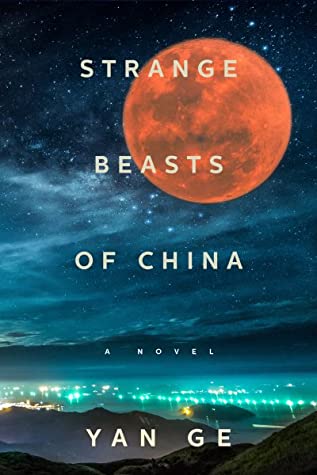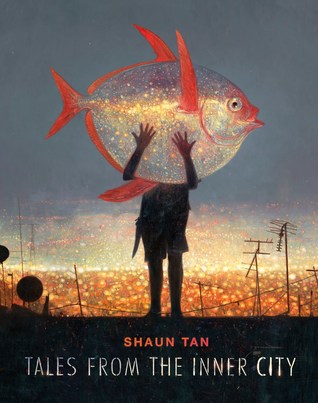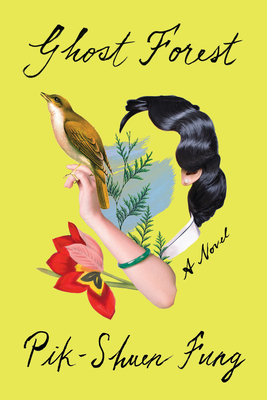Set in a fantastical China where a variety of so-called beasts coexist with people, in an indeterminate era that evokes some sense of the past in the sense that the vocabulary chosen and style of writing is reminiscent of what one may find in translations of old texts (a deliberate choice), Strange Beasts of China starts off in a somewhat sterile fashion, detailing one type of beast per short chapter, as though a guidebook to a fantastical world that we have already been immersed into, the way that Fantastical Beasts and Where to Find Them is about the magical creatures in the world of Harry Potter, except we’re discovering this world as though through these reports of the beasts. And as the narrator becomes ever more enmeshed with the beasts she introduces, the narrative begins to take on a frenetic pace – the guidebook structure doesn’t crumble altogether, but becomes infused with its own life: what are the beasts, these Others, and who are the true beasts here? As the author mentions in an interview with the CBC, she was “making pretty straightforward metaphors about marginalized, underrepresented and oppressed groups”, and it’s not difficult to derive this from the text, but the change in pacing, in tone, as Strange Beasts tumbles along, half detective story/half guidebook, makes it difficult to tear yourself from the blurry and messy story of the beasts within the story, as the sterility of the guidebook entirely falls apart to reveal how fragile are what details we take to be the truths that constitute our world.
I’m not usually a great fan of short stories, and so I wasn’t too sure when I picked up Strange Beasts of China that I’d get into it, but the short stories are all interconnected, dropping clues for the reader – never enough for you to figure it out, I don’t think, but enough to make some guesses – such that you won’t be able to tear yourself from the story once it reveals itself.
If you enjoyed Strange Beasts of China, you might also enjoy Tales From the Inner City by Shaun Tan, an author I’m quite fond of (though I’ve only read Tan’s picture books before, which are delightful and convey so much without so much as a word). Tales From the Inner City similarly moves along chapter to chapter detailing animals that cohabit our spaces in the city, the ones we notice (pigeons) along with the ones we don’t (the crocodiles – or was it alligators – on the 42nd floor of some high-rise building). Though there’s no overarching plot threading its way through the different chapters linking animal to animal (for all we know, they seem to inhabit entirely separate worlds from each other), there’s just enough familiarity to give you the sense of the uncanny.
Tales From the Inner City is also beautifully illustrated by Tan, with pages in full colour. It was an interesting experience reading these stories whose audience seems to be adults, or at least not children as a picture book is, with their fully illustrated glossy pages working together with the text to help generate an image of these slightly uncanny but entirely harmless stories of animals living within this strange city. I think what made me think of Tales From the Inner City when speaking of Strange Beasts of China might’ve been this: that whether it be the animals or the beasts, they’re not really bothering anyone. There’s an uneasy coexistence, but there’s also the understanding that the animals and beasts both are misunderstood and taken advantage of, perhaps, in some way, mistreated – othered.
If you enjoyed Tales From the Inner City, you’ll definitely want to check out some of Shaun Tan’s other works (don’t let them being filed as junior items put you off of them!), and you might also enjoy Exhalation by Ted Chiang, another collection of short stories.
I don’t really know how to explain why this next one follows, but I feel like I should group it in with the two previous books in this post: Ghost Forest by Pik-Shuen Fung. I read it immediately after Strange Beasts, is the only explanation I can offer. Or perhaps it’s the tone. While Strange Beasts aims for that scholarly note evoking ancient Chinese scripture in translation (quasi-Chinese mysticism, I want to say), the sparseness of the writing in Ghost Forest evokes all the meaningful space and void that erupts out of the interactions between the characters in this novel about a Chinese-American astronaut family. The text acts almost as a sculpture, its form highlighting the space between the narrator daughter and her parents, her grandmother. Perhaps what makes me want to include Ghost Forest in this post is because of the way that the intergenerational and cultural gap between the daughter and her parents presents a chasm in communication – one she tries to bridge as her father grows ill. Within the sparse style of writing that leaves much unsaid is the very feeling of how the family communicates, with actions and what’s unsaid but understood rather than what we are shown on the page. And throughout the novel, Fung grapples with the question of grief: “How do you grieve, if your family doesn’t talk about feelings?”
Slightly unrelated but astronaut father-related, though less supportive astronaut than that of astronaut families as understood above: Don’t Come Back From the Moon (2019).



These all sounds so amazing! I’ve recommended Strange Beasts of China to a friend despite the fact that I have yet to read it, because the premise alone is exactly up my friend’s alley and is, in fact, similar to a book they were writing (a fictional guidebook that develops into a mystery plot). Thanks for bringing new and fascinating sounding books to our attention!